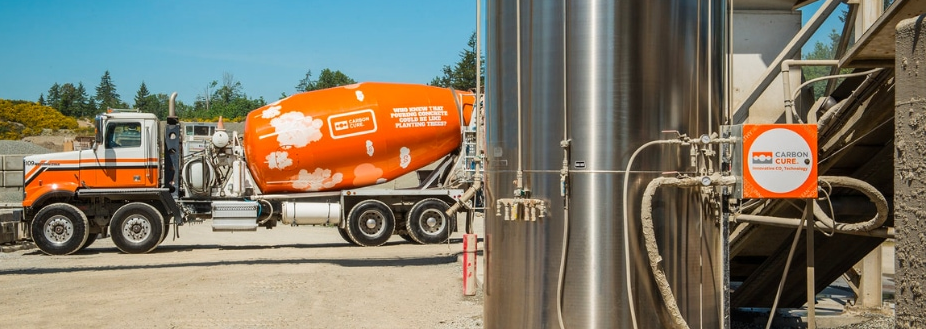deCarbonized #13: Web3 for tackling VCM pain points; Scaling biodiversity markets
Invert and Carboncure sign the world’s largest carbon removal agreement; How blockchain technology is transforming climate action

⛓ On-chain weekly carbon stats
Toucan Protocol is building carbon market infrastructure to finance the world's best climate solutions. These are our on-chain stats from 07.03- 13.03:

Stats explained...
- Bridged: Toucan’s Carbon Bridge allows anyone to bring carbon credits from legacy registries onto the Toucan Registry
- Traded: This figure represents the combined $ value of all trades in the Base Carbon Tonne (BCT) pool
- Redeemed: Anyone can redeem carbon credits from the BCT or Nature Carbon Tonne (NCT) pool and pay a fee to specify the specific carbon tonne that they would like
- Retired: Redeemed BCT and NCT tokens can be retired and claimed as a carbon offset
🦜 We will be at ETH Amsterdam next week! Check out what we're up to and join us here

📢 Top news
- Invert and Carboncure sign the world’s largest carbon removal agreement
- The island of Tuvalu are experimenting with blockchain to preserve their identity and independence
- How blockchain technology is transforming climate action
- Digital technology giants collaborate on $925m commitment to carbon removal technologies
- Blockchain-based ClimateTrade admitted to EEX mandatory carbon market

🌟New deep dive feature alert!
Web3 for tackling VCM pain points
Over the coming weeks, deCarbonized will be zooming in on how web3 can provide solutions to key pain points in the voluntary carbon market, as identified by the Taskforce for Scaling Voluntary Carbon Markets (TSVCM).
🕵️♀️ Four overarching themes will be explored, with potential solutions and existing projects highlighted.
This week we introduce why the intersection of web3 and VCMs matter.
Enjoy!🌞
Voluntary carbon markets: Opportunities and barriers
The voluntary carbon market (VCM) aims to mitigate climate change by creating space for private actors to finance activities that reduce and remove carbon emissions from the atmosphere.
Despite recent growth, VCM coverage remains marginal, encompassing less than 1% of global greenhouse gasses. McKinsey predict that demand for credits could grow up to 15 times by 2030 and 100 times by 2050, requiring a rapid scale up in VCM activity. BloombergNEF predict that credit prices could move from around $3 in 2020 to $120 by 2050, creating huge incentives to meet this demand.

While there is the practical potential for up to 12 giga-tonnes of carbon credits to be developed by 2030, challenges identified by the Taskforce for Scaling VCMs are likely to limit this to between 1-5 giga-tonnes.
These challenges, explored in the Task Force’s final report in January 2021, can be identified as 27 different key pain points currently afflicting the market. These can be categorised into five overarching themes:
- Lack of supply side financing
- Lack of regulatory oversight and market transparency
- Lack of quality assurance and sustainability
- Lack of guidance and standards for credit buyers
While these challenges may initially be exacerbated as the market grows, new actors entering the space can also provide the innovative solutions and technologies required for VCMs to reach their full potential.

How can web3 help?
Web3 is an evolution of our current web2 based internet, which is focused on centralized content creation. Built on top of blockchains, web3 incorporates concepts of decentralization and token-based economics.
Blockchain technology has been identified by the World Bank as a key tool to support the development of evolving climate markets. Opportunities speak to the pain points identified above, tackling aspects of:
- Market integrity
- Environmental integrity
- Transparency
- Inclusiveness
- Cost effectiveness
- Scalability and extensibility
Recent months have seen growing interest from the web3 community in developing VCM solutions. The most high-profile project is that of KlimaDAO, which in October 2021 demonstrated the potential of web3 to impact traditional markets.
While the project has been effective in supporting the bridging over 20 million carbon credits from Verra’s carbon registry onto the blockchain, questions have been raised over the quality of credits involved and the anonymous nature of the Founders.
The International Emissions Trading Association (IETA) recently formed a digital task group to explore and respond to this growing interest. Initial conclusions identified that while there is indeed potential for blockchain technology to address VCM challenges, activity needs to be carefully managed to ensure that risks to quality and security are avoided.

Cooperation for success
In order to achieve this balance, greater collaboration is needed across the VCM and web3 space.
As identified by Sarah Leugers, Director of Strategy at Gold Standard, if web3 projects involve VCM players from the start then there is greater potential for these innovations to be calibrated. This sentiment is echoed by Ingo Puhl of South Pole, who discusses that collaboration is needed to identify what 'best-in-class' will look like.
These efforts will ensure that emerging web3 solutions are used as a key tool in solving persistent VCM problems, as opposed to becoming solutions seeking an application.
We hope that this deep dive will help further this conversation 🎇
Next week we will explore tackling issues relating to supply-side financing 💵

💼 Jobs board
- Carbon Programme Project Manager, eAgronom - EU remote
- Program Manager, Forests & Land Use, Planet - US remote
- Voluntary Market Carbon Consultant, Associate Staffing - US remote
- Carbon and Commodity Trading Solutions Manager, KPMG UK - UK remote
🔎 Research in focus
The role of web3 in scaling biodiversity markets

Research by Kristin McDonald recently explored the importance of biodiversity in tackling climate change and the role of web3 in scaling future markets.
Biodiversity underpins the supply of nearly every major ecosystem service on earth. It is therefore fundamental to the livelihood and well-being of our planet and species.
Ecosystem services add real and financially impactful value to our society. It is estimated that the value of biodiversity in maintaining global commercial forest productivity alone is worth $490 billion per year, while the maintenance of pollinator diversity protects up to $577 billion in annual crop output.
Despite the massive value of these services, we are experiencing an alarming collapse in biodiversity. This is due to our current global economy’s inability to internalize the value created by ecosystem services.
Current market progress
At present, some companies voluntarily invest in biodiversity conservation or restoration, spawning a small but growing voluntary market of biodiversity offsets. Rough estimates put this market at less than $100 million.
Many in the industry however, are starting to see signs of inflection in the voluntary biodiversity market that are reminiscent of the evolution of the voluntary carbon markets. Companies like Nestle, Salesforce and Bayer are moving beyond net zero commitments to nature positive ones, trying to figure out how to fulfil these. This is creating new demand and setting the trend for other companies to follow suit.

Biodiversity markets of tomorrow
Creating or implementing a biodiversity offset is challenging:
- A number of stakeholders need to be engaged, dependent on the type of offset
- Private agencies need to identify willing landowners and conduct or supervise restoration action
- Baseline levels and ongoing measuring, reporting and verification (MRV) standards need to be established
- Credits need to be verified with a particular government agency
Responding to growing demand in an effective manner will therefore require a move towards biodiversity offsets as scalable, commoditized assets, able to be “sold” to offsetting organizations in a fungible way.
In a sense biodiversity already trades in voluntary carbon markets, as offsets that have biodiversity as a co-benefit. These represent the highest volume of offsets sold and fetch premiums relative to offsets without it.
It takes no stretch of the imagination then to consider a world where that biodiversity co-benefit is measured, valued and sold separately from the carbon offset it’s tied to.

Potential of web3
Building a biodiversity market on-chain would bring the same level of scalability, trust, and transparency that players like Toucan Protocol are seeking to bring to the carbon markets. New opportunities include:
- Consumers (and eventually even regulators) could demand that companies offset their biodiversity impacts knowing it’s possible to get accurate, measurable outcomes in return
- Land owners could implement biodiversity-favourable practices at scale as a source of reliable income, dramatically increasing the value of land regeneration
- The cost of biodiversity impact could be internalized into development projects, disincentivizing the conversion of high-biodiversity areas
- Biodiversity could become a bankable commodity, with funds owning biodiversity offsets as an asset or a hedge against climate change
- A liquid, on-chain market could unlock an entirely new magnitude of capital devoted to protecting biodiversity
If done well, these applications could create a unique opportunity to skip the fragmentation and lack of standardization that plagues voluntary carbon markets, and potentially create a more liquid, flexible and resilient ecosystem altogether.
Read Kristin’s full piece here for more on web3 potential and emerging MRV applications.

Thank you for reading deCarbonized! 👏
Reach out to us on social and join the community ✨
Suggestions on what to cover next? Let me know @DrHolWat
Toucan is building the technology to bring the world's supply of carbon credits onto energy-efficient blockchains and turn them into tokens that anyone can use. This paves the way for a more efficient and scalable global carbon market.

